-
 Bitcoin
Bitcoin $115100
-2.99% -
 Ethereum
Ethereum $3642
-1.38% -
 XRP
XRP $3.027
-5.51% -
 Tether USDt
Tether USDt $1.000
-0.05% -
 BNB
BNB $763.4
-1.32% -
 Solana
Solana $177.2
-5.42% -
 USDC
USDC $0.9999
-0.02% -
 Dogecoin
Dogecoin $0.2247
-6.47% -
 TRON
TRON $0.3135
0.23% -
 Cardano
Cardano $0.7824
-4.46% -
 Hyperliquid
Hyperliquid $42.53
-0.97% -
 Stellar
Stellar $0.4096
-6.09% -
 Sui
Sui $3.662
-2.61% -
 Chainlink
Chainlink $17.63
-3.57% -
 Bitcoin Cash
Bitcoin Cash $536.3
2.94% -
 Hedera
Hedera $0.2450
0.34% -
 Avalanche
Avalanche $23.23
-3.15% -
 Litecoin
Litecoin $112.2
-1.23% -
 UNUS SED LEO
UNUS SED LEO $8.976
-0.30% -
 Shiba Inu
Shiba Inu $0.00001341
-2.72% -
 Toncoin
Toncoin $3.101
-2.44% -
 Ethena USDe
Ethena USDe $1.001
-0.05% -
 Uniswap
Uniswap $10.08
-1.97% -
 Polkadot
Polkadot $3.938
-2.77% -
 Monero
Monero $323.9
0.87% -
 Dai
Dai $0.9999
-0.02% -
 Bitget Token
Bitget Token $4.481
-1.69% -
 Pepe
Pepe $0.00001199
-5.94% -
 Aave
Aave $288.2
-0.68% -
 Cronos
Cronos $0.1279
0.36%
How to fix frequent crashes of the mining software?
To fix frequent mining software crashes, ensure proper cooling, update drivers, check power supply, and monitor system resources to prevent overheating and instability.
Mar 30, 2025 at 10:49 pm
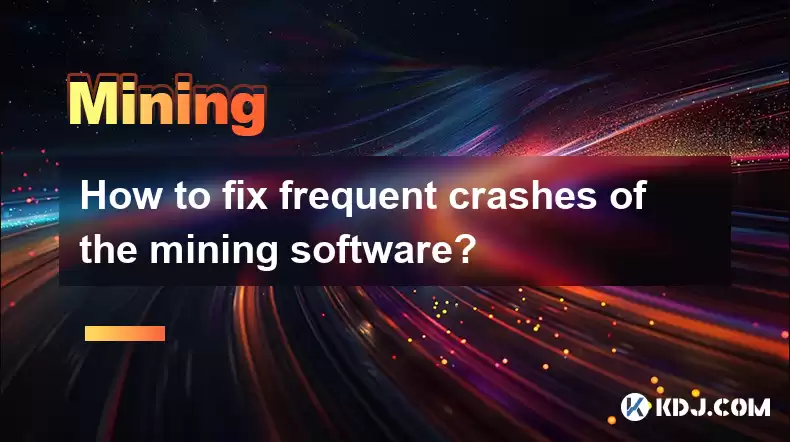
How to Fix Frequent Crashes of Your Mining Software
Understanding Mining Software Crashes
Mining cryptocurrency requires specialized software that runs continuously, demanding significant processing power and system resources. Frequent crashes can stem from various issues, significantly impacting your mining profitability and potentially damaging your hardware. Identifying the root cause is crucial for effective troubleshooting. This guide will explore common causes and solutions for resolving these frustrating disruptions.
Common Causes of Mining Software Crashes
Overheating: Mining generates substantial heat. If your hardware (GPU, CPU) exceeds its safe operating temperature, it will likely crash to prevent damage. Ensure adequate cooling with sufficient fans, a well-ventilated case, and potentially liquid cooling for high-end setups.
Power Supply Issues: Mining demands considerable power. An insufficient or faulty power supply unit (PSU) can lead to instability and crashes. Verify your PSU's wattage rating is sufficient for your hardware and mining operation. Consider upgrading to a higher-wattage PSU if necessary. Check for any loose connections or damaged cables.
Driver Problems: Outdated or corrupted graphics card drivers are a common culprit. Update your graphics drivers to the latest versions from the manufacturer's website (Nvidia or AMD). Consider a clean driver installation to remove any conflicting files.
Software Bugs: Mining software, like any software, can contain bugs. Check for updates to your mining software regularly. The developers often release patches to address known issues and improve stability. Consider using a different miner if the problem persists.
Operating System Issues: An unstable operating system can affect the performance of any application, including mining software. Ensure your operating system is up-to-date and free from malware. Consider a clean installation if other solutions fail.
Hardware Failure: Faulty hardware components, such as a failing GPU or RAM, can lead to unpredictable crashes. Run hardware diagnostics to identify any failing components. Consider replacing any faulty hardware.
Overclocking Instability: Pushing your hardware beyond its factory specifications can lead to instability and crashes. Reduce overclocking settings if you've overclocked your GPU or CPU. Start with smaller adjustments and monitor the system's stability.
Insufficient RAM: Mining software requires a significant amount of RAM. If your system lacks sufficient RAM, it can lead to crashes. Consider upgrading your RAM if your system is constantly running low on memory. Close unnecessary background applications to free up RAM.
Background Processes: Other applications running in the background can compete for system resources, leading to mining software instability. Close unnecessary applications before starting your mining software. Disable any non-essential startup programs.
Pool Issues: Problems with the mining pool you're connected to can sometimes cause crashes. Try switching to a different mining pool to see if that resolves the issue. Check the pool's status and look for any reported problems.
Troubleshooting Steps
Check System Temperatures: Use monitoring software to track your CPU and GPU temperatures during mining.
Monitor Power Consumption: Ensure your power supply can handle the load.
Update Drivers: Install the latest drivers from the manufacturer's website.
Check Mining Software Logs: Examine the software's logs for error messages.
Test Hardware: Run diagnostic tests on your GPU, CPU, and RAM.
Reinstall Mining Software: A clean reinstall can resolve software conflicts.
Optimize Operating System: Ensure your OS is clean and up-to-date.
Reduce Overclocking: Lower overclocking settings to improve stability.
Frequently Asked Questions
Q: My mining software crashes frequently, and my GPU temperature is high. What should I do?
A: High GPU temperatures are a major cause of crashes. Ensure adequate cooling with fans, a well-ventilated case, and consider liquid cooling. Reduce your overclocking settings if applicable.
Q: My power supply is making strange noises, and my mining software keeps crashing. What could be the problem?
A: Strange noises from your PSU often indicate a failing component. This can lead to power instability and software crashes. Replace your PSU with a higher-wattage model suitable for your mining rig.
Q: I updated my graphics drivers, but my mining software still crashes. What else can I try?
A: Try a clean driver installation. This removes all previous driver files, ensuring a fresh installation. Also, check your mining software's logs for any error messages that might indicate other problems.
Q: My mining software crashes randomly, and there are no error messages. What could be causing this?
A: Random crashes without error messages can indicate a hardware problem. Run diagnostic tests on your components (GPU, CPU, RAM). A failing component can cause intermittent crashes.
Q: I've tried everything, and my mining software still crashes. What should I do?
A: If you've exhausted all troubleshooting steps, consider seeking help from the mining software's community forums or support channels. They may have encountered similar issues and offer specific solutions. You might also need professional assistance to diagnose a more complex hardware problem.
Disclaimer:info@kdj.com
The information provided is not trading advice. kdj.com does not assume any responsibility for any investments made based on the information provided in this article. Cryptocurrencies are highly volatile and it is highly recommended that you invest with caution after thorough research!
If you believe that the content used on this website infringes your copyright, please contact us immediately (info@kdj.com) and we will delete it promptly.
- Solana, Altcoins, and Coinbase: What's the Buzz?
- 2025-07-26 06:30:12
- Ethereum, Pepeto Presale, and Market Appetite: What's the Buzz?
- 2025-07-26 06:50:12
- TOKEN6900: The Next Big Meme Coin? Presale Heats Up!
- 2025-07-26 05:30:35
- ONDO Breakout Assessment: Whales, Wallets, and What's Next?
- 2025-07-26 05:30:35
- Kaspa's Strongest Month REVEALED: New Data Shocks KAS Traders!
- 2025-07-26 04:30:12
- Cross-Border Payments Revolution: Stablecoins and Payment Providers Leading the Charge
- 2025-07-26 04:50:12
Related knowledge
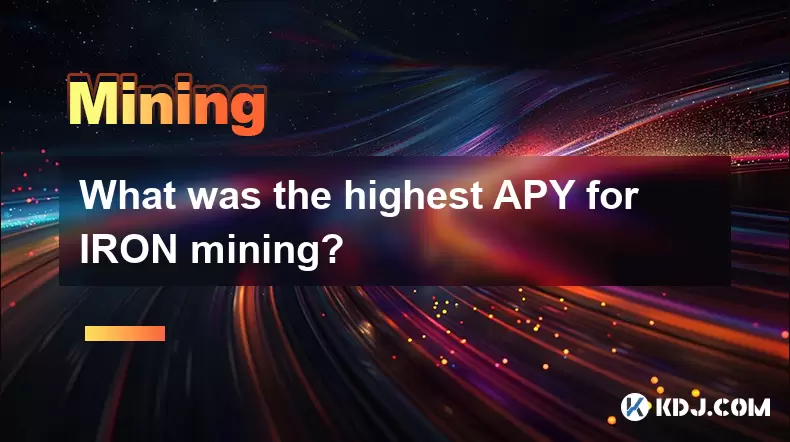
What was the highest APY for IRON mining?
Jul 23,2025 at 05:14am
Understanding IRON Token and Its Mining MechanismThe IRON token is a stablecoin that operates within the Iron Finance ecosystem, primarily on blockcha...

What is impermanent loss in IRON pools?
Jul 23,2025 at 09:00am
Understanding Impermanent Loss in the Context of IRON PoolsImpermanent loss is a phenomenon that affects liquidity providers in decentralized finance ...
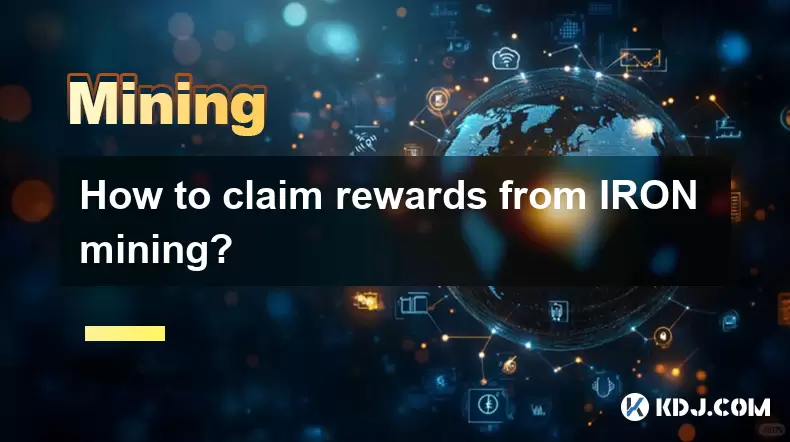
How to claim rewards from IRON mining?
Jul 23,2025 at 02:21pm
Understanding IRON Mining and Reward MechanismsIRON Finance operated as a decentralized finance (DeFi) protocol on the Polygon and Binance Smart Chain...
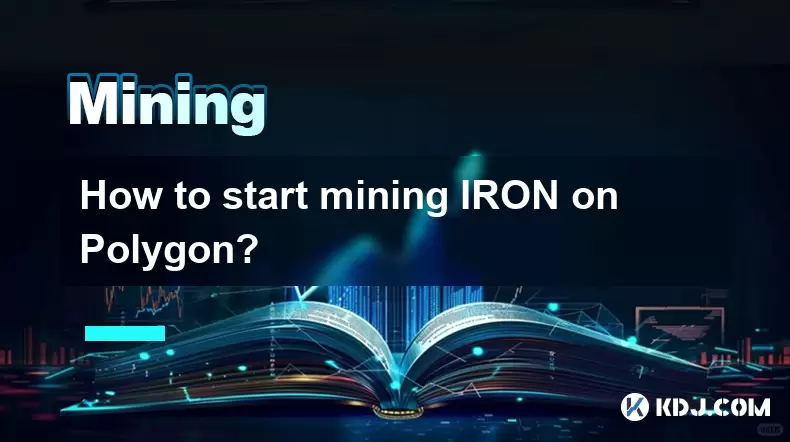
How to start mining IRON on Polygon?
Jul 23,2025 at 08:00pm
Understanding IRON and Its Role on PolygonIRON is a decentralized, algorithmic stablecoin designed to maintain a 1:1 peg with the US dollar. It operat...
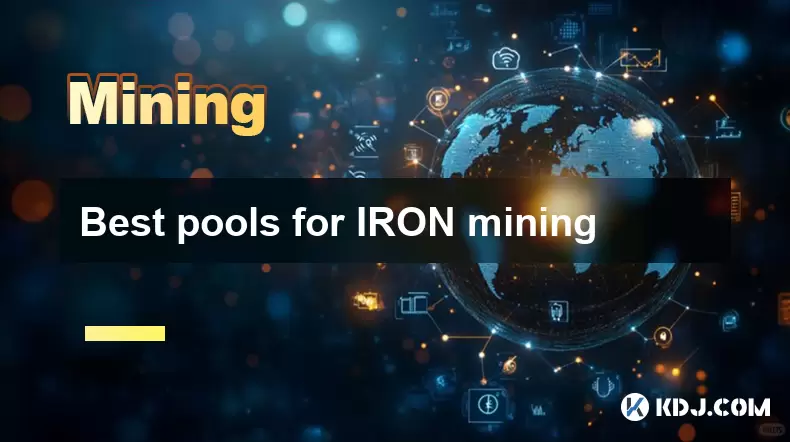
Best pools for IRON mining
Jul 26,2025 at 03:56am
Understanding IRON Mining and Its Unique MechanismIRON (Iron Finance) was a decentralized finance (DeFi) project that aimed to create a multi-chain al...
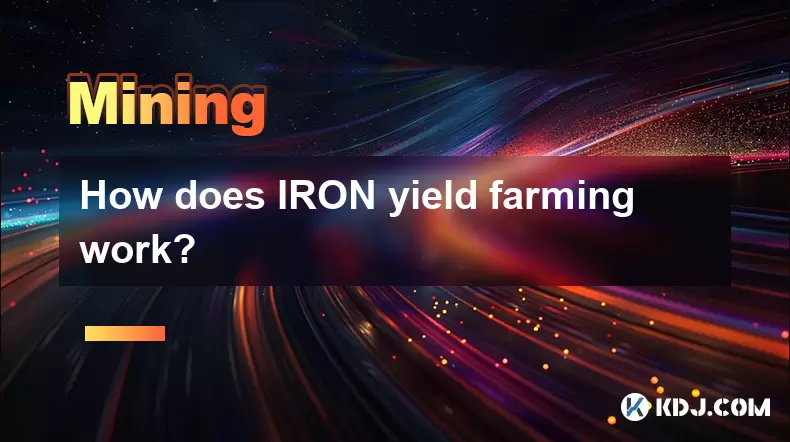
How does IRON yield farming work?
Jul 23,2025 at 10:14pm
Understanding IRON Yield Farming and Its Core MechanismIRON yield farming is a decentralized finance (DeFi) strategy that allows users to earn rewards...

What was the highest APY for IRON mining?
Jul 23,2025 at 05:14am
Understanding IRON Token and Its Mining MechanismThe IRON token is a stablecoin that operates within the Iron Finance ecosystem, primarily on blockcha...

What is impermanent loss in IRON pools?
Jul 23,2025 at 09:00am
Understanding Impermanent Loss in the Context of IRON PoolsImpermanent loss is a phenomenon that affects liquidity providers in decentralized finance ...

How to claim rewards from IRON mining?
Jul 23,2025 at 02:21pm
Understanding IRON Mining and Reward MechanismsIRON Finance operated as a decentralized finance (DeFi) protocol on the Polygon and Binance Smart Chain...

How to start mining IRON on Polygon?
Jul 23,2025 at 08:00pm
Understanding IRON and Its Role on PolygonIRON is a decentralized, algorithmic stablecoin designed to maintain a 1:1 peg with the US dollar. It operat...

Best pools for IRON mining
Jul 26,2025 at 03:56am
Understanding IRON Mining and Its Unique MechanismIRON (Iron Finance) was a decentralized finance (DeFi) project that aimed to create a multi-chain al...

How does IRON yield farming work?
Jul 23,2025 at 10:14pm
Understanding IRON Yield Farming and Its Core MechanismIRON yield farming is a decentralized finance (DeFi) strategy that allows users to earn rewards...
See all articles

























































































